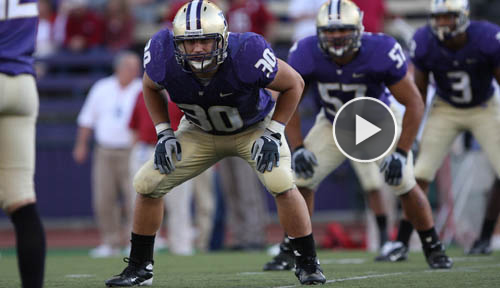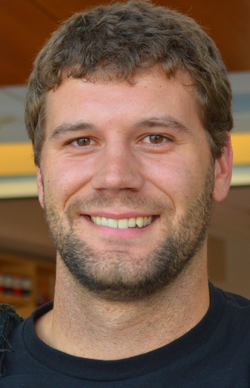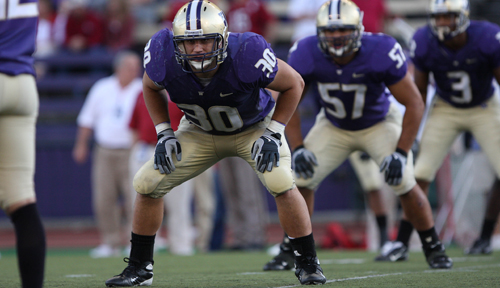 |
| VIDEO: See Paul Homer’s story here |
As a fullback and special-teams football player at the University of Washington, Paul Homer was given the team’s 2007 Chuck Niemi Big Hit Award.
As a second-year medical student at UNMC, he spent last summer in a lab, researching traumatic brain injury (TBI).
He doesn’t see any conflict between the two. Rather, it’s the perfect combination of two passions.
As a football player, “it was a part of my life,” Homer said. “I want to make sure I stay a part of that and have some effect.”
 |
Paul Homer |
Homer worked in the lab of Matt Kelso, Pharm.D., Ph.D., an assistant professor in UNMC’s College of Pharmacy. Dr. Kelso specializes in studying the pathophysiology and treatment of TBI. Dr. Kelso’s lab utilizes models of TBI to study the biochemical mechanisms that are affected by the mechanical trauma. The hope is that new drug treatment can then protect neurons from degeneration and ultimately improve functional outcomes.
Dr. Kelso’s most recent publication was a cover story for the Aug. 16 issue of the Journal of Neurotrama.
The lab team’s Husker fans would good-naturedly razz Homer for his allegiance to the Huskies. (Homer was part of two state championship teams at Millard North, but accepted a full scholarship to Washington when Nebraska asked him to pay his own way.) But they appreciated the unique background he brought to the research.
“It was really interesting to hear his perspective with him having that connection,” Dr. Kelso said.
He’s celebrated big hits and felt their aftereffects. He knows this is a complicated issue, not just scientifically, but emotionally, too.
Homer knows it isn’t that simple that the work he did last summer would have a direct connection to what goes on out on the football field. But he is hopeful that Dr. Kelso’s research will someday help find a treatment for TBI.
“I don’t think in working research there’s ever a point A to point B,” Homer said. Scientists just hope what they do is a piece of the puzzle, “a contributing factor,” Homer said.
That’s something a fullback knows all about.
